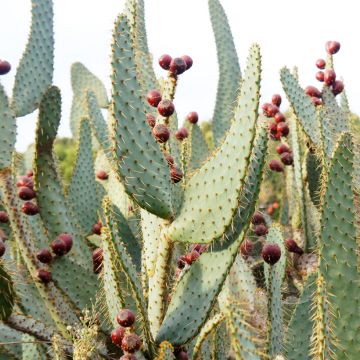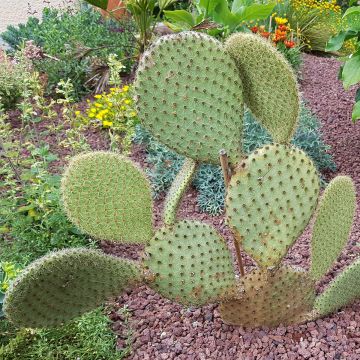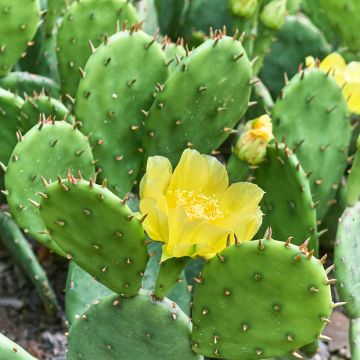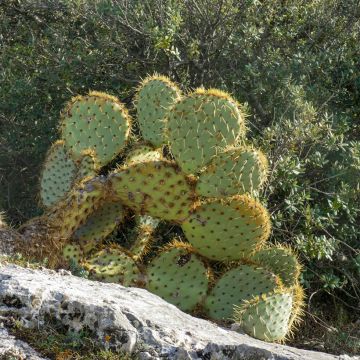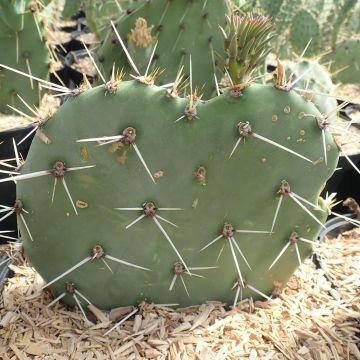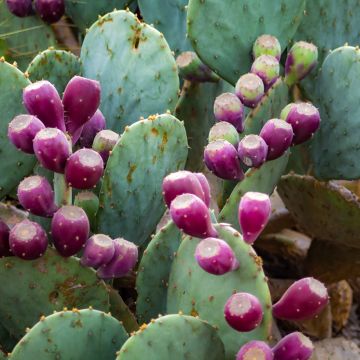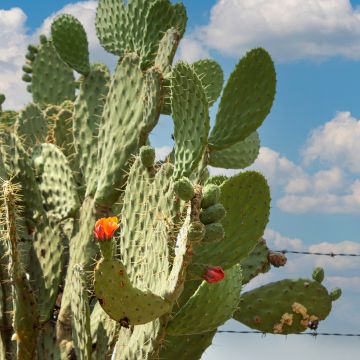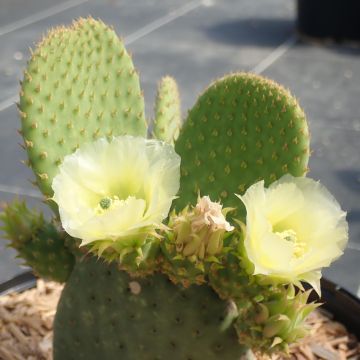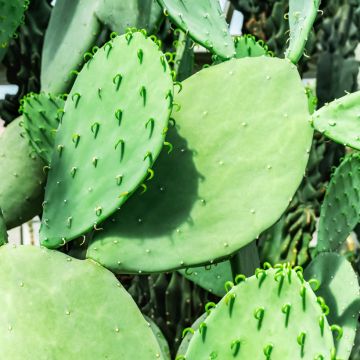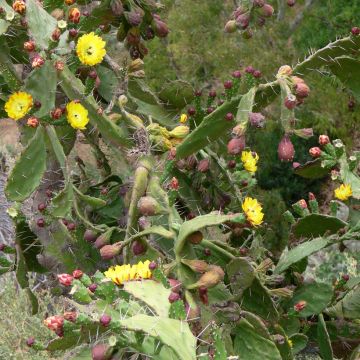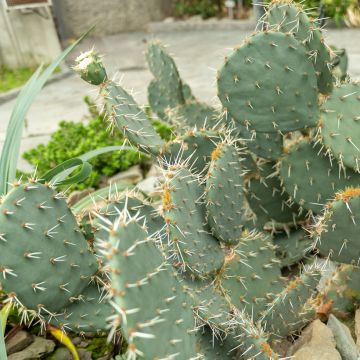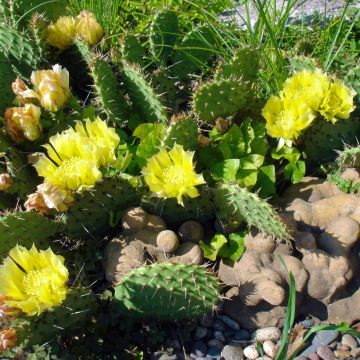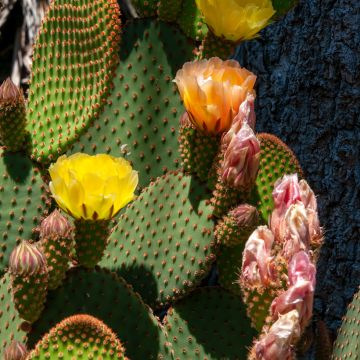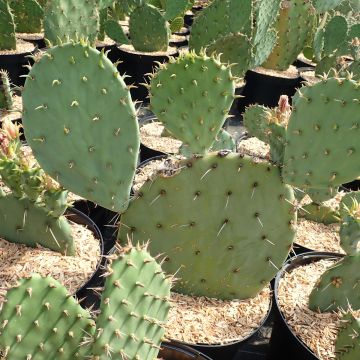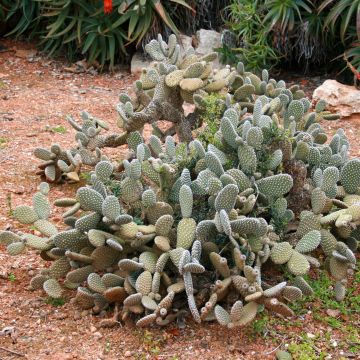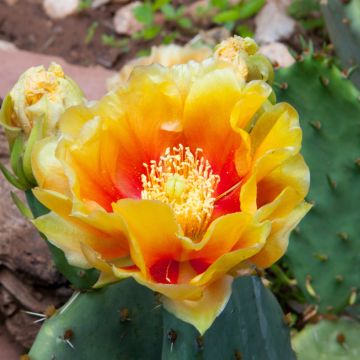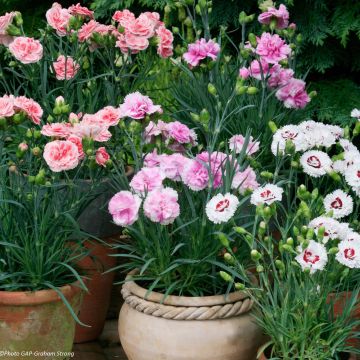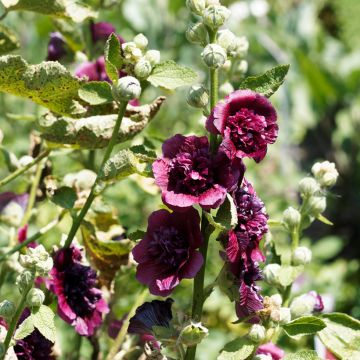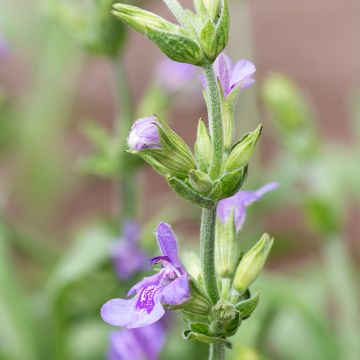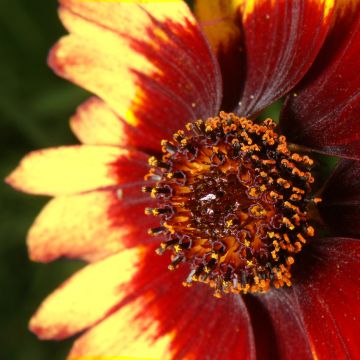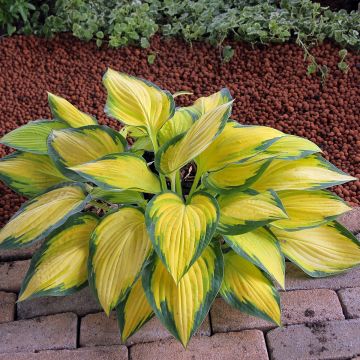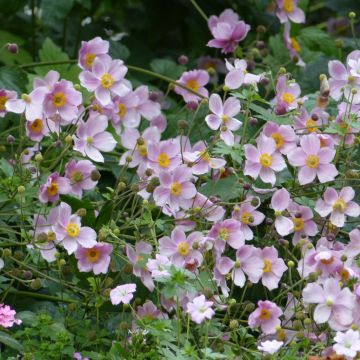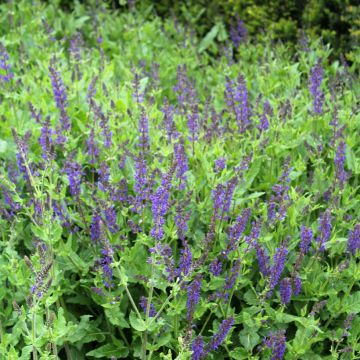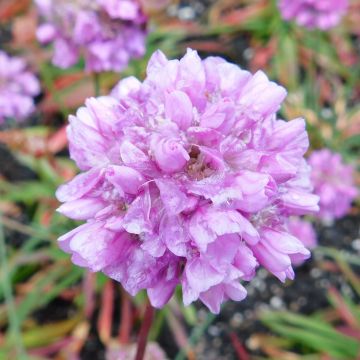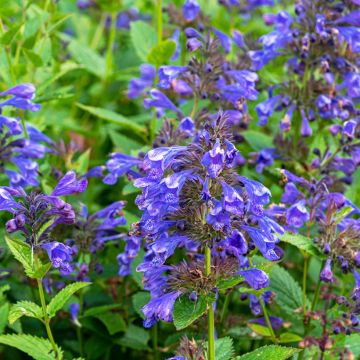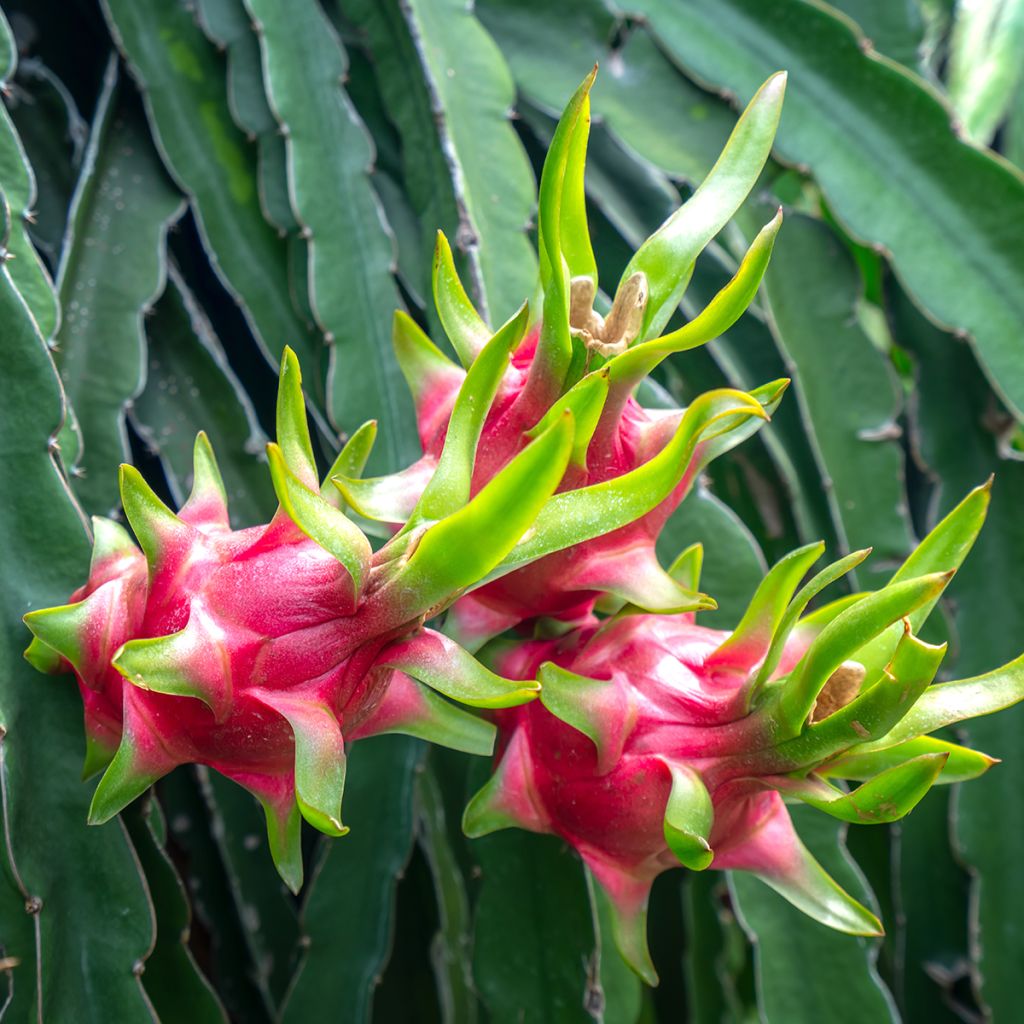

Hylocereus undatus
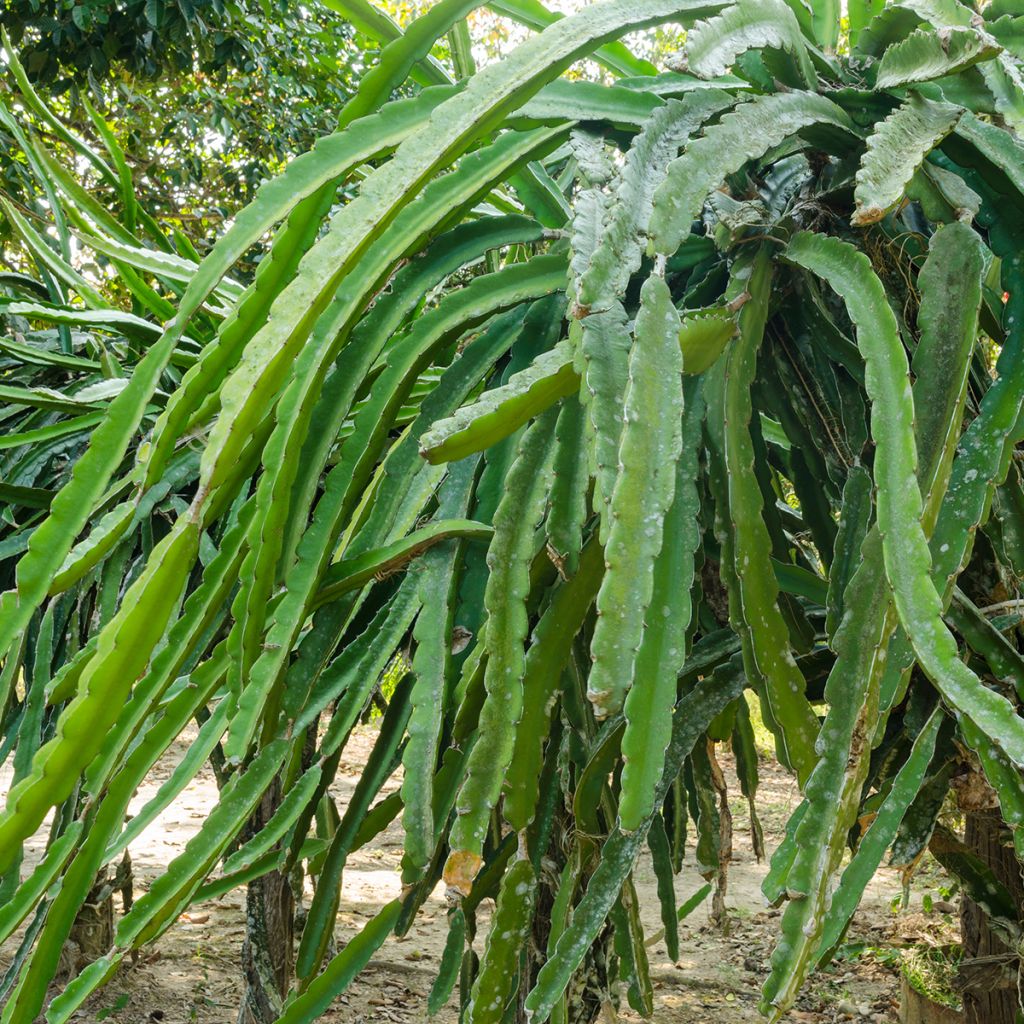

Hylocereus undatus
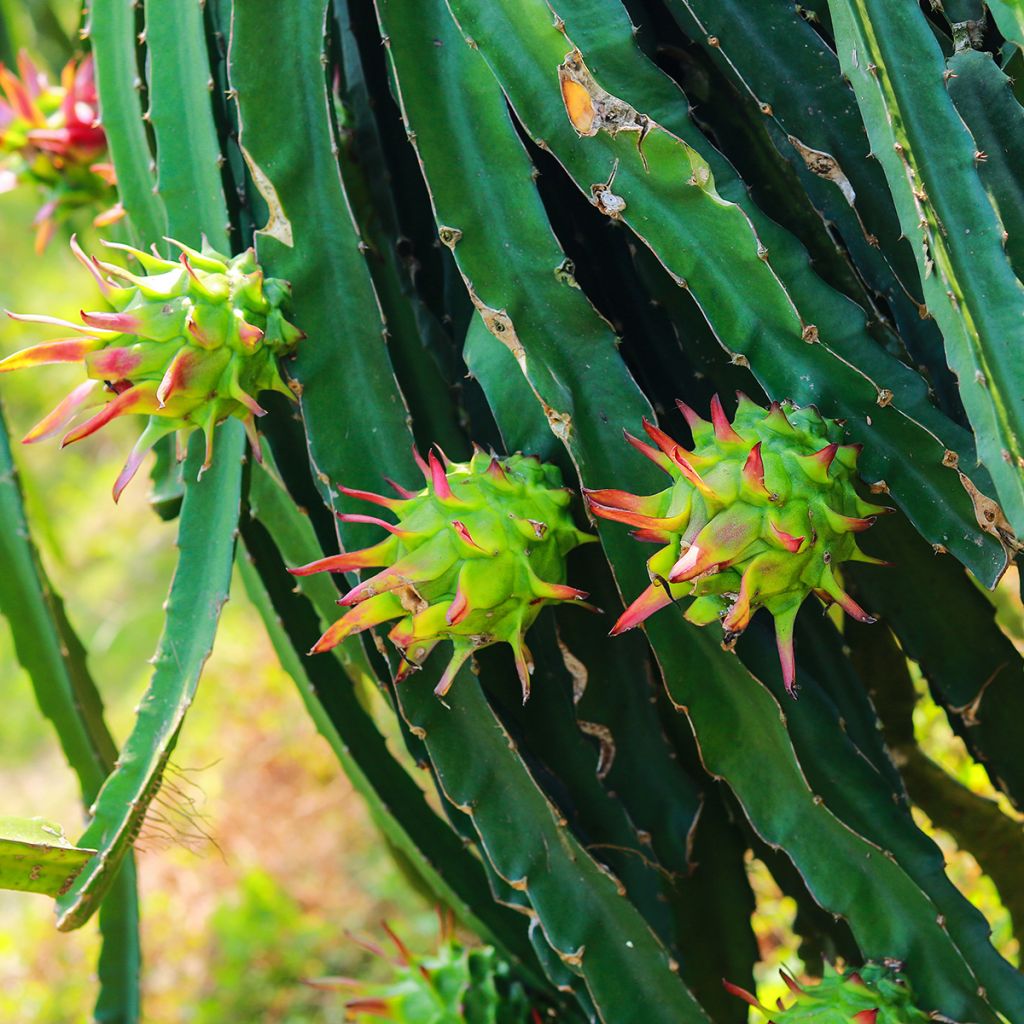

Hylocereus undatus
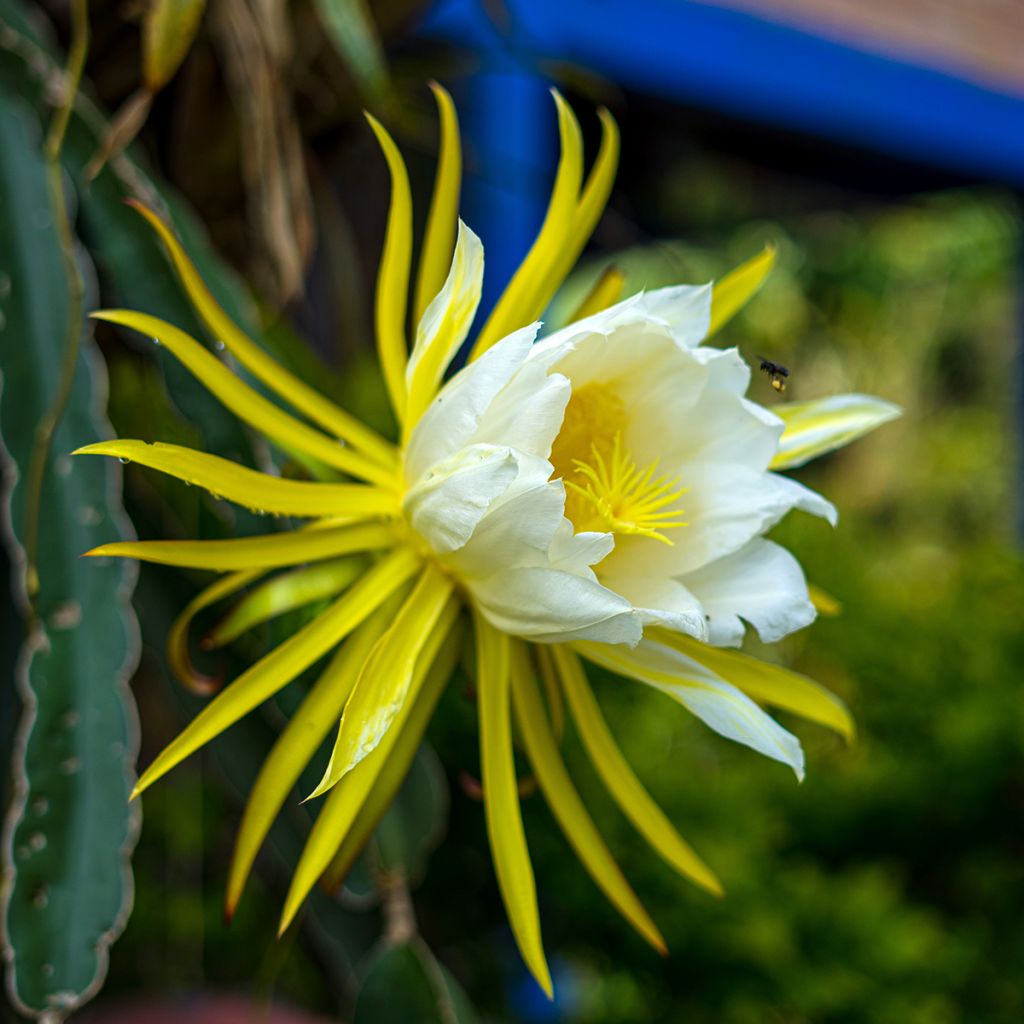

Hylocereus undatus
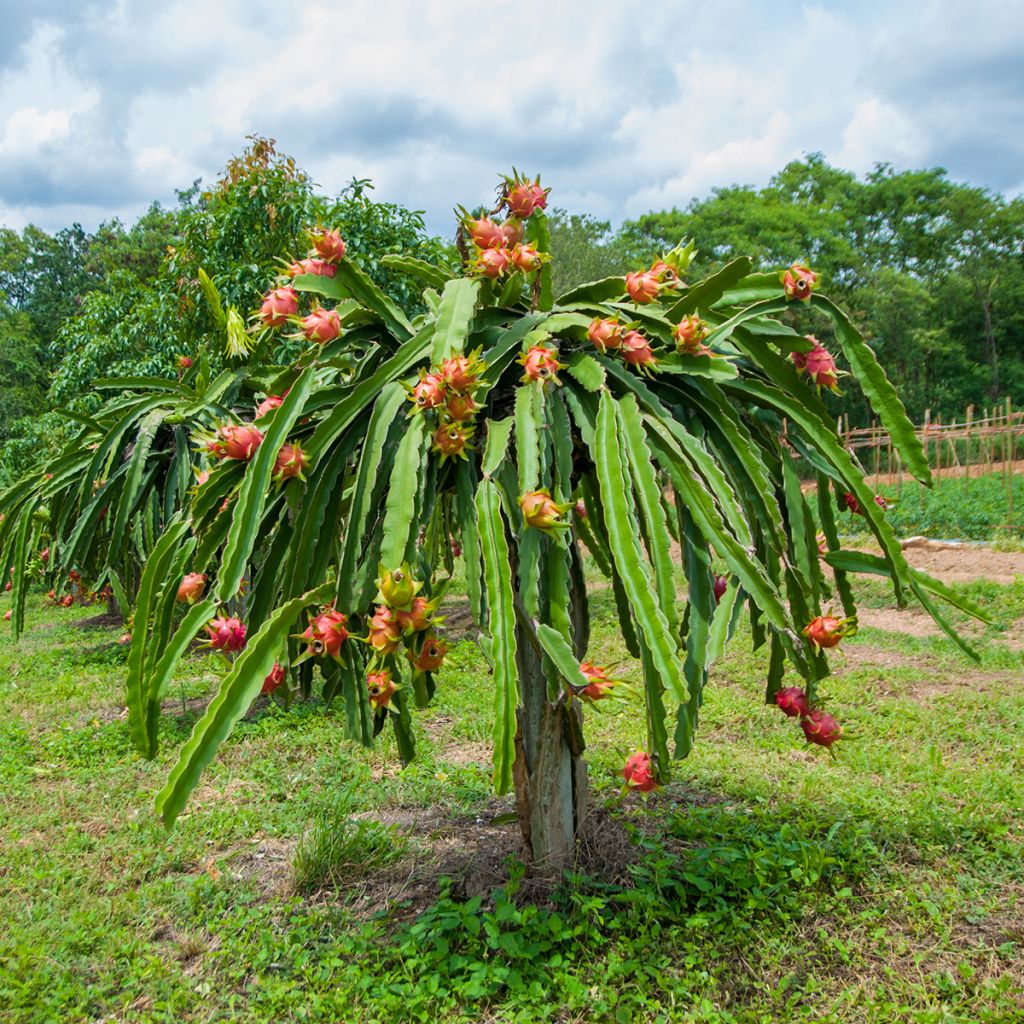

Hylocereus undatus
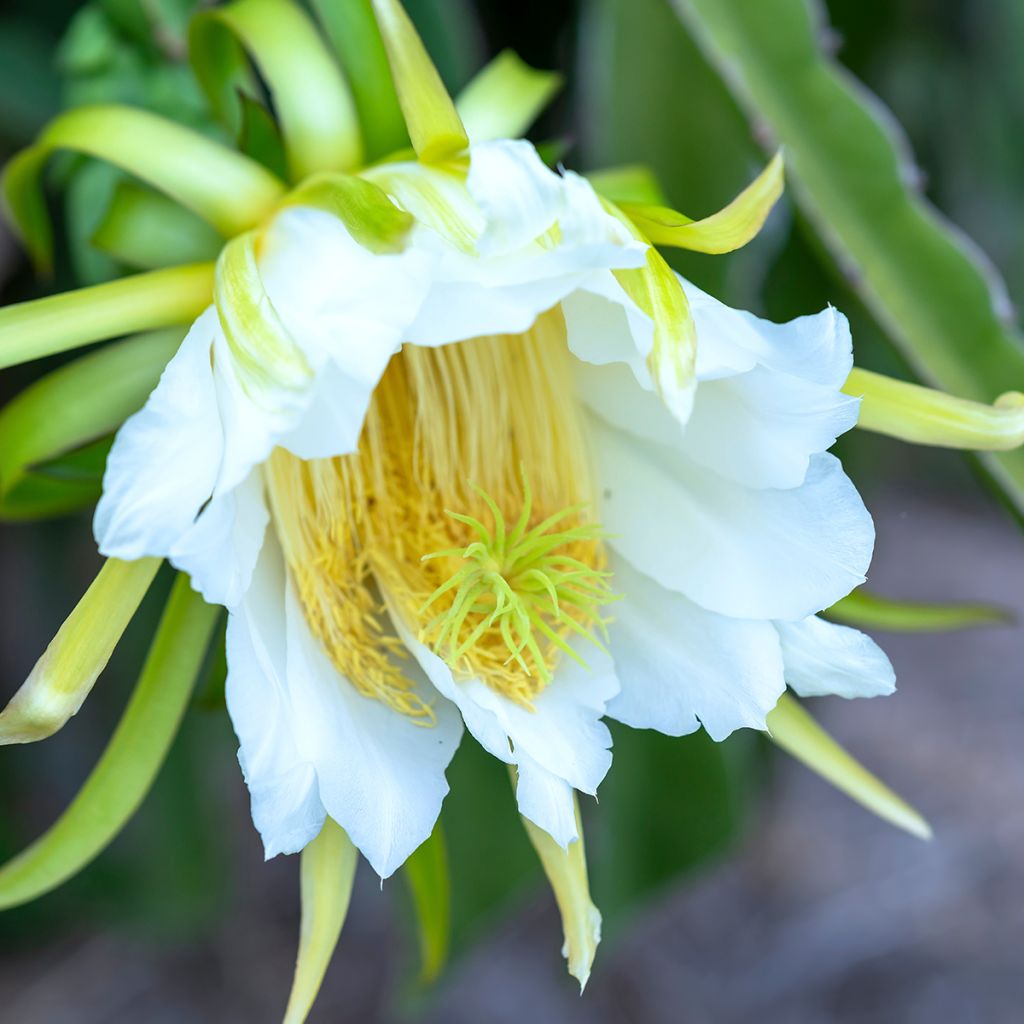

Hylocereus undatus
Hylocereus undatus
Hylocereus undatus
Why not try an alternative variety in stock?
View all →This plant carries a 6 months recovery warranty
More information
We guarantee the quality of our plants for a full growing cycle, and will replace at our expense any plant that fails to recover under normal climatic and planting conditions.
From €5.90 for pickup delivery and €6.90 for home delivery
Express home delivery from €8.90.
Description
The Hylocereus undatus, now renamed Selenicereus undatus, is a species of cactus better known by its fruit, the pitaya or dragon fruit. This tropical plant behaves like a climbing plant: rooted in the soil, it needs support to grow. In its natural state, it forms very long segments with few thorns, reaching several metres long. The very large white flowers that bloom at night produce after fertilisation pinkish-fuchsia fruits with highly ornamental scales and a subtle flavour. In our climates, this cactus will be cultivated in a pot and brought indoors to a bright and heated shelter at 10°C during winter. A plant for passionate enthusiasts!
Hylocereus is one of the 90 genera that make up the Cactaceae family, which is rich in about 2500 species, primarily American. This group of plants is very diverse, including arborescent or columnar plants, globular or prickly pear-shaped (Opuntia), epiphytes (which grow on other plants like trees), and even a few climbers, such as the genus Hylocereus. The latter includes 20 species native to Mexico and other countries in Central America. Originally from the Yucatan Peninsula (Mexico), the Hylocereus undatus is also found in several countries in Central America. Since the success of its fruit in international markets, it has been widely cultivated for food purposes, especially in Southeast Asia.
This curious cactus is not an epiphyte as its roots in the soil, but lacking sufficient rigidity, it needs support to rise, making it a true climbing plant. In its native lands, it develops very long stems, which can exceed 6 metres in length. Green in colour, their cross-section has three wings with undulating edges along their entire length. The areoles (small typical protrusions of Cactaceae) are widely spaced and usually have only one mildly aggressive spine. The plant produces aerial roots, which help it climb on its support. In commercial plantations, the cactus is fixed to a nearly 2-metre-high stake, from which it falls on both sides, eventually resembling a mini palm tree due to its easy branching.
In the tropics, the mature Hylocereus (after about 12 to 15 months) can flower and bear fruit 4 to 6 times a year. In temperate climates, annual flowering usually occurs from June onwards. The flowers are white, bell-shaped, very large, measuring up to 35 cm long and 25 cm in diameter. Highly ornamental, they open at dusk and bloom during the night, spreading a vanilla scent in the air. In the tropics, they are pollinated by bats that help spread the pollen from one plant to another, as a plant cannot fertilise itself. If you want to venture into fruit production, you will need at least two plants and take care of pollination during the night! In tropical climates, it takes approximately 30 days for the fruit to reach the harvesting stage, with the scales still green. Oval in shape, the fruit can weigh up to 700 grams and has a pinkish-fuchsia colour, beautifully contrasting with the green and then yellow scales. This form has white flesh dotted with tiny black seeds and varieties with red or purple flesh. Highly decorative, it is also edible and appreciated, with a sweet taste that is not excessive, suitable for all palates.
The Hylocereus undatus is an original plant that will attract true enthusiasts who have a suitable space to overwinter it, such as a greenhouse or conservatory with minimal heating. It cannot be planted outdoors anywhere in Europe, which limits its distribution. Fans of exotic plants can grow it in a large container and provide it with a stake to climb. It can be accompanied by orangery species, such as the astonishing Buddha's Hand (Citrus medica var. sarcodactylis), a Citron tree with long finger-like fruits and a highly aromatic zest. The true Lemongrass (Cymbopogon citratus), a tropical grass whose leaves are used in many Asian dishes, is just as easy to grow in a pot to bring indoors during winter.
The pitaya has acquired real economic importance. In 2023, this fruit generated a total revenue of over 14 billion dollars (US). Vietnam is the leading producer, accounting for about 50% of the global volume on a cultivated area of 55,000 hectares. The variety with white flesh represents 95% of the production, and Europe is the market with the highest current growth.
Report an error about the product description
Hylocereus undatus in pictures


Plant habit
Fruit
Flowering
Foliage
Botanical data
Hylocereus
undatus
Cactaceae
Selenicereus undatus, Cereus undatus
Central America
Other Opuntia
Planting and care
Plant the Hylocereus undatus, preferably in spring, in a pot to be brought indoors to a greenhouse or conservatory as soon as the nighttime temperatures drop to around +8°/+10°C. Choose acidic soil (pH between 5.5 and 6) and mix it with draining materials (such as coarse non-limestone sand) to improve drainage. This plant, of tropical origin, cannot tolerate frost and needs a temperature constantly above +4°C and ideally not frequently dropping below 10°C. Its ideal temperature range for ensuring good growth extends from 18°C to 27°C, knowing it can withstand much higher heat levels.
During the summer season, the pot can be placed outdoors, in full sun in the least sunny regions and under light shade to the south. Water approximately once a week, allowing the substrate to dry between waterings. Add a special cactus fertiliser to water every two to three weeks. The lower the temperatures drop, the less frequent the watering should be.
Regarding health, watch out for attacks from scale insects, which can be formidable. Act as soon as they appear to remove them from the plant as quickly as possible to prevent them from taking over! Excessive watering can cause the appearance of mildew, which is also formidable for cacti.
Planting period
Intended location
Care
This item has not been reviewed yet - be the first to leave a review about it.
Summer flowering perennials
Haven't found what you were looking for?
Hardiness is the lowest winter temperature a plant can endure without suffering serious damage or even dying. However, hardiness is affected by location (a sheltered area, such as a patio), protection (winter cover) and soil type (hardiness is improved by well-drained soil).

Photo Sharing Terms & Conditions
In order to encourage gardeners to interact and share their experiences, Promesse de fleurs offers various media enabling content to be uploaded onto its Site - in particular via the ‘Photo sharing’ module.
The User agrees to refrain from:
- Posting any content that is illegal, prejudicial, insulting, racist, inciteful to hatred, revisionist, contrary to public decency, that infringes on privacy or on the privacy rights of third parties, in particular the publicity rights of persons and goods, intellectual property rights, or the right to privacy.
- Submitting content on behalf of a third party;
- Impersonate the identity of a third party and/or publish any personal information about a third party;
In general, the User undertakes to refrain from any unethical behaviour.
All Content (in particular text, comments, files, images, photos, videos, creative works, etc.), which may be subject to property or intellectual property rights, image or other private rights, shall remain the property of the User, subject to the limited rights granted by the terms of the licence granted by Promesse de fleurs as stated below. Users are at liberty to publish or not to publish such Content on the Site, notably via the ‘Photo Sharing’ facility, and accept that this Content shall be made public and freely accessible, notably on the Internet.
Users further acknowledge, undertake to have ,and guarantee that they hold all necessary rights and permissions to publish such material on the Site, in particular with regard to the legislation in force pertaining to any privacy, property, intellectual property, image, or contractual rights, or rights of any other nature. By publishing such Content on the Site, Users acknowledge accepting full liability as publishers of the Content within the meaning of the law, and grant Promesse de fleurs, free of charge, an inclusive, worldwide licence for the said Content for the entire duration of its publication, including all reproduction, representation, up/downloading, displaying, performing, transmission, and storage rights.
Users also grant permission for their name to be linked to the Content and accept that this link may not always be made available.
By engaging in posting material, Users consent to their Content becoming automatically accessible on the Internet, in particular on other sites and/or blogs and/or web pages of the Promesse de fleurs site, including in particular social pages and the Promesse de fleurs catalogue.
Users may secure the removal of entrusted content free of charge by issuing a simple request via our contact form.
The flowering period indicated on our website applies to countries and regions located in USDA zone 8 (France, the United Kingdom, Ireland, the Netherlands, etc.)
It will vary according to where you live:
- In zones 9 to 10 (Italy, Spain, Greece, etc.), flowering will occur about 2 to 4 weeks earlier.
- In zones 6 to 7 (Germany, Poland, Slovenia, and lower mountainous regions), flowering will be delayed by 2 to 3 weeks.
- In zone 5 (Central Europe, Scandinavia), blooming will be delayed by 3 to 5 weeks.
In temperate climates, pruning of spring-flowering shrubs (forsythia, spireas, etc.) should be done just after flowering.
Pruning of summer-flowering shrubs (Indian Lilac, Perovskia, etc.) can be done in winter or spring.
In cold regions as well as with frost-sensitive plants, avoid pruning too early when severe frosts may still occur.
The planting period indicated on our website applies to countries and regions located in USDA zone 8 (France, United Kingdom, Ireland, Netherlands).
It will vary according to where you live:
- In Mediterranean zones (Marseille, Madrid, Milan, etc.), autumn and winter are the best planting periods.
- In continental zones (Strasbourg, Munich, Vienna, etc.), delay planting by 2 to 3 weeks in spring and bring it forward by 2 to 4 weeks in autumn.
- In mountainous regions (the Alps, Pyrenees, Carpathians, etc.), it is best to plant in late spring (May-June) or late summer (August-September).
The harvesting period indicated on our website applies to countries and regions in USDA zone 8 (France, England, Ireland, the Netherlands).
In colder areas (Scandinavia, Poland, Austria...) fruit and vegetable harvests are likely to be delayed by 3-4 weeks.
In warmer areas (Italy, Spain, Greece, etc.), harvesting will probably take place earlier, depending on weather conditions.
The sowing periods indicated on our website apply to countries and regions within USDA Zone 8 (France, UK, Ireland, Netherlands).
In colder areas (Scandinavia, Poland, Austria...), delay any outdoor sowing by 3-4 weeks, or sow under glass.
In warmer climes (Italy, Spain, Greece, etc.), bring outdoor sowing forward by a few weeks.


































